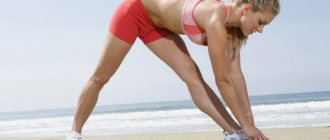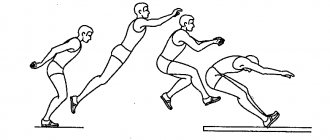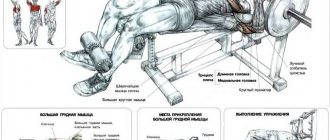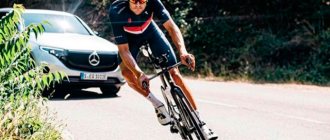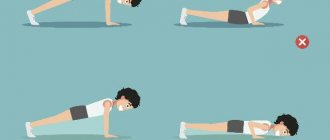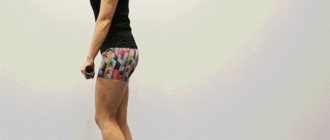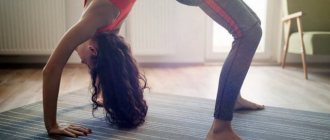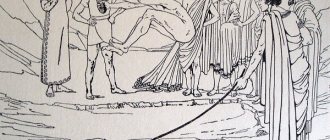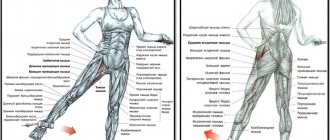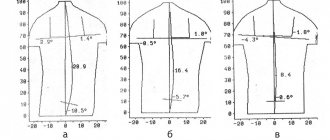“Methodology for teaching exercises in support”
LYCEUM "DUBNA"
“METHODOLOGY FOR TEACHING EXERCISES IN SUPPORT”
Completed:
Dubna 2009
What is emphasis? This is the position of the practitioner in which his shoulders are above the support points.
Training in exercises in support is carried out using the methods of showing, telling, practical implementation, using techniques in fixing a pose, belaying and self-insurance, and helping each other. All exercises in support must be performed with a clear fixation of the pose, with the obligatory observance of correct posture, strictly in a gymnastic style, beautifully and easily. Careless performance of these exercises, especially at the learning stage, is unacceptable.
To train elementary school students (grades 1-4) in performing push-ups, various exercises are used without implements, as well as with the use of implements. These are various general developmental exercises: moving on the floor and on a gymnastic bench while lying down, standing, on your knees, as well as on an obstacle course.
Performing push-up exercises is difficult for children. Therefore, we gradually move from relatively simple exercises to more complex ones. At the beginning of training, we divide the children into groups, some do the exercises, others observe. Later, when the children acquire the skills and the necessary organization, we carry out the exercises in a stream, but at certain intervals. For example, the second student begins to move along the bench only after the first reaches the middle of the bench, etc.
For training we use the following exercises:
1. I.P. (starting position) sitting with hands behind, legs in front - moving forward (“cuttlefish” with legs forward).
2. I.P. the same - moving your arms forward (“cuttlefish” with your back forward).
3. I.P. emphasis bent - moving your arms forward (“spider” forward with your arms).
4. I.P. the same - moving feet forward (“spider” feet forward).
5. I.P. lying position - moving forward using one hand (“crocodile”).
6. I.P. crouched emphasis - jump with support on your hands forward (“frog”).
7. Moving on a gymnastic bench - lying on your side (right, left).
8. Jumping sideways over a bench, arms supported, moving forward.
9. Climbing on a gymnastic bench standing on the floor: resting on your knees, all fours; forward and back, grabbing the edges of the bench with your hands.
10. The same as step 9, but on a bench installed at an angle of 10-15 degrees.
11. The same as points 9 and 10, but rearranging the arms and legs in opposite directions and at the same time.
12. The same types of climbing on a bench, but the bench is installed at an angle of 30 degrees.
13. The same types of climbing, but with different leg positions: bent, straight legs, on toes, on the whole foot.
14. In the fifth grade, they add to the exercises in support, walking along the uneven bars in support on the hands. The exercise is performed on low bars.
Assistance and insurance: support the trainee by the forearm.
Errors: strong swinging of the legs, long movements of the arms, draw the student’s attention to ensure that the gaze is directed forward.
Also in the fifth grade, swinging in support on the uneven bars is learned. First, swinging is performed at the ends, and then in the middle of the bars. For boys of this age, this exercise is difficult due to poor strength development. In this regard, it is advisable not to start learning the exercise immediately, using a “whip-like” technique.
Help and insurance: standing on the side, support the trainee by the forearms and shoulder; falling back while swinging forward is especially dangerous; in this case, you must be prepared to support the student’s back.
Mistakes: the torso “sags” due to relaxation in the shoulder joints, bending of the arms at the elbow joints, a large angle in the hip joints when swinging forward, lowering the head.
Based on these mistakes, the requirements for swinging follow: straight arms, tense shoulders, end the backswing with a slight bend, look straight. In the first lessons, you need to limit the number of swings in one approach and their amplitude.
In the sixth grade, the following exercises are learned: swinging, sitting legs apart, sitting on the right hip, left hand in front with a reverse grip, dismount with an inward turn of 180 degrees.
Sit legs apart, performed after swinging in support, on the swing in front. As soon as your legs rise above the poles, gently lower them to the poles. In this case, the legs should be straight at the knee joint, and the body should be slightly arched in the chest.
Help and insurance: standing from the side, support the student’s body by the forearm and shoulder.
Mistakes: the legs hit the poles hard, the body is excessively bent at the hip joints (the pelvis is between the hands or even behind the hands), the pelvis is lowered below the poles.
Learning the dismount occurs in the following sequence. From a sitting position, legs apart, bend at the hip joints. Swing your right leg over to the left pole to a sitting position on your right thigh, and grab your left hand point-blank with a reverse front grip. Pushing off with your right hand, turn over 180 degrees and land with your left side to the projectile, holding the pole with your left hand. We begin training from a position sitting sideways on a log.
In the seventh grade, they learn how to dismount with a backward swing.
Execution: while swinging in support on the uneven bars, gradually increase the height of the position of the legs on the swing in front and behind. On the backswing, shift your body towards the dismount. When dismounting to the left (right). Pushing off with your right (left), grab the left (right) pole in a two-hand grip (the backswing continues), move your left (right) hand to the side, and holding the right (left) pole, land on slightly bent legs. Sequence of training:
1. Jump backwards from the ends on low bars, without letting go of your hands.
2. The same, but with body movement to the right (left).
3. Dismount with a swing back to the left (right) with the interception of hands.
4. From emphasis, lying legs apart on the poles, toes outward, intercepting the right (left) point-blank, lying crosswise on the left (right) pole and, pushing off with your feet, the dismount bending over.
5. Back swing dismount with help.
Help and insurance: standing from the side, be ready to support or pull the arm with a grip above the elbow in the right direction and at the right moment of the swing, namely at the very end.
Mistakes: weak backswing (legs below the poles), movement to the side is carried out with only the legs, and the shoulders remain in place, very late interception of the arms.
In the eighth grade, they learn how to rise with a backward swing and sit with their legs apart.
The back swing is performed by swinging in support on the forearms. While resting on your forearms, your elbows should be placed inside the bars, and your hands should grab the poles from the outside so that your forearms are not parallel to the poles. In this position the emphasis will be the most stable. From the emphasis on your forearms, perform a small forward swing. As you pass the vertical, speed up the backswing movement, slightly moving your shoulders forward. When the body is higher than the poles, sharply straighten your arms and, pushing your shoulders forward, go into a point-blank position. Moving to a point-blank position, on the forward swing, spread your legs to the sides and smoothly lower them onto the poles, bringing your legs apart to a sitting position.
Help and insurance: standing on your side, support your shoulder with one hand and your thigh with the other.
Sequence of training:
1. Swinging in support on the forearms.
2. At the ends of the poles of low bars, facing inward, lift with a backward swing.
3. From the emphasis on the forearms, rise with a backward swing.
4. After rising with a backward swing, sit your legs apart.
Errors: early or late start of the rise; incorrect head position.
In the ninth grade, one learns how to rise with a forward swing into a sit with legs apart on the uneven bars. Performed by swinging while holding hands. While resting on the poles, your arms should be slightly bent at the elbow joints, with the bones facing outward. Swing forward, as soon as your legs pass the vertical, bend slightly at the hip joints. As your feet pass the line of the poles, straighten up vigorously, pushing your shoulders off the poles. Moving to a point-blank position, spread your legs to the sides and smoothly lower them onto the poles.
Help and insurance: standing on the side, help by pressing under the hip and back (from under the poles) in the direction of the rise.
Lifting sequence:
1. While leaning on your hands, “sag”, trying to touch the floor with your toes, vigorously pressing your shoulders on the poles, lift your body up, each time strive to raise your body as high as possible.
2. Swinging in support on your hands until your legs are above the level of the poles in front and behind.
3. The same, but swing your legs forward in a support position while lying on your hands in front.
4. From resting on your hands, with your feet on the goat standing under the poles, “sag” in your shoulders and, pressing your shoulders on the poles, leaning your feet on the goat, enter into a rest position.
5. While lying on your hands in front, “sag” slightly and by actively pushing your shoulders away from the poles, enter into a sit with your legs apart.
6. Lifting forward with a swing, legs apart, with help.
Mistakes: insufficient forward swing, early start of the rise, strong flexion in the hip joints at the moment of going into point-blank range. It is not recommended to begin training in lifting until you have firmly mastered the technique of swinging in support on your hands.
In grades 10 and 11, he learns: bending and extending the arms in support on the uneven bars, angle in support, shoulder stand from a sitting position with legs apart, lifting with a forward swing.
Bending and extension of the arms in support is performed at the elbow joints almost until the shoulders touch the bars of the bars.
Mistakes: incomplete flexion and extension of the arms, swaying, assisted by jerking the legs.
Sequence of training:
1. Push-ups, lying down (from 1st to 11th grades).
2. The same but from the poles of the bars.
3. The same, but the legs are on increased support.
4. Slow bending of the arms in support on the uneven bars (low bars).
5. Jump to point-blank range and further extend the arms while point-blank on the uneven bars without delay (low, medium bars).
6. Flexion and extension of the arms in support with help (standing on the side, help by the hips).
The angle in support is performed: from the position of support on the uneven bars, by bending the straight legs to an angle of 90 degrees and further maintaining this position. Performing a push-up angle requires good development of muscle strength in the arms, shoulder girdle and abdominal muscles. To do this, various exercises are performed to develop these muscle groups. But there are also special exercises:
1. In support on the uneven bars, due to the swing, bending the straight legs to an angle of 90 degrees.
2. The same, but with legs spread above the poles.
3. The same but without the swing.
4. Sitting on the floor, straining the muscles of the legs and abdominal girdle, raise yourself on your hands, trying to maintain the position of the angle.
A shoulder stand with force is performed from an emphasis while sitting with your legs apart. We intercept with our hands in front closer to our hips. Forcefully raise your pelvis, slightly bend your arms, straightening at the hip joints, connect your legs, spread your elbows to the sides, lower yourself into a shoulder stand. For a stable position, you need to place your shoulders slightly forward from your hands. When performing a stance, pay special attention to the position of the head, the gaze is directed vertically downwards in order to better feel the position of the body relative to the horizon.
Help and insurance: standing on your side, support your back with one hand and your chest with the other. On low bars, hands are above the poles, on medium bars, under the poles.
Mistakes: placing the hands far from the hips, strong bending of the back, incomplete straightening of the hip joints, shoulder close to the hands, incorrect head position.
Sequence of training:
1. From the main stance, rise on your toes, consistently tensing the muscles of your legs and buttocks, achieve a vertical position of your torso and stand in this position.
2. Stand on the head and hands with force.
3. On the gymnastic wall, hanging bent from behind, raising straight legs to a vertical position.
4. Shoulderstand with help on low, medium bars.
5. Shoulder stand with strength.
Lifting with a forward swing is performed by swinging in support on your hands. While swinging forward, bend slightly at the hip joints, when passing the line of the poles with your feet, slightly slowing down the movements of the legs, vigorously jerk your chest forward upward, pushing off with your shoulders from the poles and, pushing your shoulders forward, go to point-blank range.
Assistance and insurance: Standing on the side, help by pressing under the back and hip in the direction of lifting at the moment of pushing off from the poles.
Mistakes: the forward swing must be done quite strongly, otherwise the lift will not work; if you suddenly start the lift when the legs have not reached the poles, this will lead to the body moving forward, and not to lifting forward and upward (in such cases you have to go point-blank through strongly bent arms).
Sequence of training:
1. Perform as preparatory exercises for grade 9 when learning to lift with a forward swing into a squat with legs apart.
2. Raise forward with a swing forward on your forearms.
3. Climbing forward with a swing on inclined poles.
4. Lift forward with help.
5. Lift forward by yourself.
To better improve the exercises being learned in the supports, we combine these elements in combination and learn them with the students.
Bibliography:
1. , . Comprehensive physical education
students in grades 1-11. Moscow "Enlightenment" 2006
Get text
Terms
A grip is a way of holding an athlete onto an apparatus while performing an exercise. There are different types of grip: from above, from below, from outside, reverse grip of the hands from the inside of the projectile, mixed, cross, long and narrow.
Hanging is a body position in which the shoulders are below the grip point.
Support is a body position in which the shoulders are located above the support points.
Swing is a pendulum-like movement of a body from one extreme point to another. There is rear and front.
Lifting - moving from a hang to an emphasis or from a lower emphasis to a higher one. It can be performed with force, a forward or backward swing, a force flip, a forward or backward swing - an extension, an arc.
Flip is a rotational movement of the body with a complete inversion over the head forward or backward without intermediate support or with support from the hands.
A revolution is a circular movement of the body around a gymnastic apparatus or grip points, starting at emphasis and ending either at emphasis, or in a hanging position or in a handstand when performed without touching the apparatus.
A large rotation is a circular movement of the body around the axis of a gymnastic apparatus or grip points, starting and ending in a handstand or with a maximum removal of the body’s center of gravity.
Overswing is a swinging movement of one or two legs over a gymnastic apparatus in support, without releasing the hands or releasing one or both hands.
Circle - a circular movement of the legs over the projectile or part of it.
Flight - moving from a hang or support on one side (part) of the projectile to a hang or support on the other side (part) of the projectile with the release of both hands.
Approach - performing actions at the end of a forward or backward swing with releasing the hands (turns, somersaults) and returning to the projectile in a hanging position or emphasis.
Tuck is a body position in which it is maximally bent at the hip and knee joints, knees are pressed to the chest, and hands clasp the lower part of the legs.
Bent over - a position of the body in which it is maximally bent at the hip joints.
Bent - a position in which the body remains straight or slightly arched.
Somersault is a complete flip over the head without intermediate support on the hands from a standing start, from a run or in flight.
Flick-flyak (flyak) is a jump up and back with two phases of flight: bending in the first part before resting on the hands and bending in the second part after pushing with the hands.
Pirouette - a backflip bending over with a 360 degree turn.
Angle - a hanging or support position when straight legs are positioned at right angles to the body.
Cross - a position on the rings in which support is provided by arms spread to the sides.
Split is a sitting position with your legs spread as far apart as possible, with support on their entire surface (the angle between the two legs is approximately 180º).
An element is a component of an exercise (combination). A separate complete movement or action of a certain structure, having a beginning, a basis and an end.
A compound is a combination of two or more elements performed together.
Exercises (combinations) are combinations of individual elements and connections in a holistic, unified and compositionally defined order. They have a beginning, a base and an ending (dismount) of a certain difficulty.
Transition is the movement of an athlete on an apparatus to the right or left when performing any technical element.
Twist - performing an exercise with a rotational movement in the shoulder joints.
Rotation is the movement of the gymnast’s body around its longitudinal axis or the movement of individual parts of the body around their longitudinal axes.
Dismount - jumping from an apparatus to the floor in various ways at the end of the exercise.
Share link
